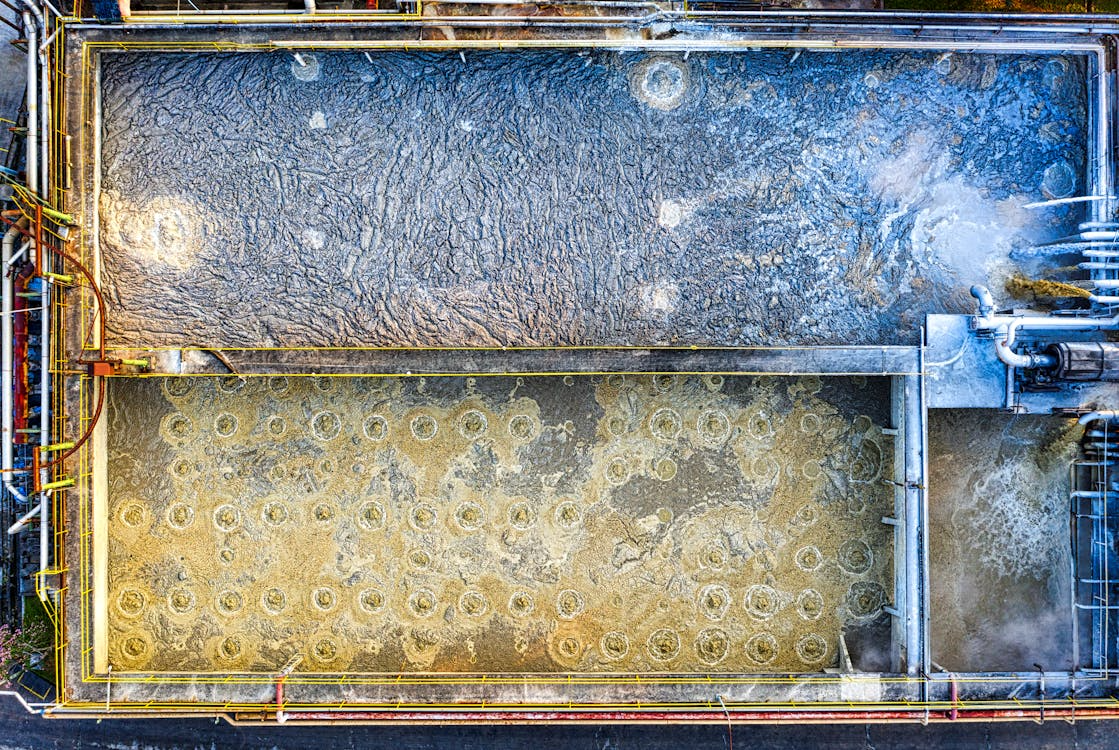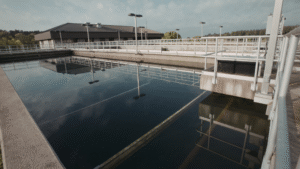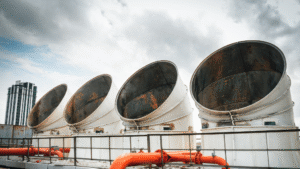Why Flocculants Matter in Water Treatment
In the world of water treatment, few chemical agents play a more pivotal role than flocculants. Whether in wastewater treatment plants, stormwater treatment, or industrial wastewater treatment, the ability to effectively remove suspended solids, fine particles, and organic contaminants hinges on one essential process: flocculation.
Flocculants are specialized polymers designed to promote the aggregation of small particles into larger clumps—known as flocs—which then settle or float out of solution. These larger, denser coagulated particles are much easier to remove, either through sedimentation, filtration, or flotation. The result? Cleaner water, lower sludge volume, and more efficient downstream processes.
From municipal facilities to food processors, flocculants help bridge the gap between compliance and performance.
The Process Called Flocculation
Flocculation is the second stage in the coagulation process and flocculation process during wastewater treatment. While coagulants (like ferric chloride, aluminum sulfate, or lime) neutralize particle charges and destabilize suspended particles, flocculants take that initial reaction a step further. They use long-chain polymer molecules to bind these destabilized particles together, forming dense, settleable flocs.
These flocs:
- Settle more easily
- Reduce clogging
- Improve sludge handling
This process works across a variety of systems—natural water sources, river water, wastewater, and even high-strength industrial waste streams. And when optimized correctly, it results in fewer wastewater treatment chemicals, reduced sludge generation, and better protection of aquatic life downstream.
Types of Flocculants
Flocculants differ significantly in their chemical composition, structure, and application. While all promote floc formation, not all are suitable for the same processes or waste streams.
1. Organic Polymeric Flocculants
These are synthetic or naturally derived long-chain polymers used for high-performance clarification and solids removal. They come in:
- Cationic forms for negatively charged particles (common in biological or organic waste)
- Anionic forms for positively charged or neutral particles (metal-laden wastewater, lime-softened water)
- Nonionic flocculants for specialized systems
Key features:
- Available in liquid or powder forms
- Offer tailored molecular weights and charge densities
- Common in industrial wastewater treatment, sludge dewatering, and DAF systems
2. Inorganic Flocculants
While not as chemically complex as synthetic polymers, inorganic precipitates such as aluminum and iron salts can aid in floc formation. These are often used alongside coagulants or as part of a hybrid treatment strategy.
They’re effective but tend to:
- Increase sludge volume
- Require more pH control
- Be less selective in targeting suspended particles
3. Natural Polymers
Derived from plant-based materials, starch, or biopolymers, these flocculants are gaining attention due to their biodegradability and lower environmental footprint.
Applications:
- Drinking water treatment
- Systems requiring reduced metal content or chemical footprint
However, they may not perform well in high-load wastewater streams without additional treatment support.
When to Use Flocculants
In most systems, flocculants are introduced after coagulation—once initial destabilization has occurred. They’re commonly applied in:
- Primary and secondary clarification tanks
- Sludge dewatering units (e.g., belt filter presses, centrifuges)
- Stormwater runoff treatment
- Animal waste lagoons
- Industrial clarifiers and flotation systems
When properly selected and applied, flocculants reduce reliance on mechanical treatment, improve water clarification, and lower overall operating costs.
Flocculant Chemistry and Industrial Application
Understanding Flocculant Chemistry
The performance of a flocculant in water treatment depends heavily on its charge and chemical composition. Flocculants function by creating molecular bridges between suspended particles, encouraging them to form flocs that can settle or float.
There are three main charge types:
1. Cationic Flocculants
- Carry a positive charge
- Ideal for negatively charged particles like organic matter and biological solids
- Common in municipal wastewater, sludge dewatering, and industrial wastewater treatment
2. Anionic Flocculants
- Carry a negative charge
- Target positively charged particles including metal precipitates (e.g., from aluminum sulfate, ferric sulfate, iron coagulants)
- Effective in mining, metal finishing, and lime softening
3. Nonionic Flocculants
- Carry no net charge
- Used in sensitive applications where ionic activity may interfere with treatment processes or react with additives
Beyond charge, flocculant performance is shaped by molecular weight, polymer chain length, and charge density. These properties determine how quickly flocs form, how strong they are, and how well they settle or float.
For a deeper dive into matching flocculant chemistry to your system, see ETI’s guide on Selecting the Right Polymer Flocculant for Wastewater Treatment.
Choosing the right flocculant starts with understanding its charge profile and where it performs best. The table below summarizes the key differences between cationic, anionic, and nonionic flocculants, including when and where each type is typically used in water and wastewater treatment.
| Flocculant Type | Charge | Best For | Common Applications | Key Considerations |
|---|---|---|---|---|
| Cationic | Positive | Negatively charged particles | Sludge dewatering, municipal wastewater, food processing | Must match with biological or organic solids |
| Anionic | Negative | Positively charged particles, metal precipitates | Mining, lime softening, metal finishing | Often paired with iron or aluminum inorganic coagulants |
| Nonionic | Neutral | Sensitive systems, minimal ionic interference | Textile wastewater, specialty process flows | Lower bonding strength, needs tight control |
Powder vs. Liquid Flocculants
In most industrial and municipal systems, flocculants are available in either powder or liquid form. Each format serves different operational needs:
Powder Flocculants
- Longer shelf life
- Lower shipping weight
- Ideal for large-scale systems
- Requires makedown with proper dosing equipment
Liquid Flocculants
- Ready-to-use
- Ideal for smaller systems or rapid deployment
- Easier to apply, but may have a shorter shelf life
Powder formulations offer maximum cost efficiency and precise polymer control, while liquids deliver simplicity for operators with fewer resources or tight time constraints.
ETI offers both options through its Advanced Flocculant Technologies, helping clients choose based on system demand, volume, and operational goals.
Where Flocculants Are Used in Industrial Applications
The versatility of flocculants in water treatment makes them valuable across dozens of sectors. Below are just a few examples:
Municipal Wastewater Treatment
- Applied in both primary and secondary clarification
- Improve sludge thickening, filter material performance, and effluent quality
- Support ph control and reduce sludge generation
Industrial Manufacturing
- Remove tiny particles, emulsified oils, or metals from complex streams
- Help stabilize phosphorus-rich floc and separate fine solids
- Used alongside coagulant chemicals (like ferric chloride or aluminium sulphate) to optimize solids capture
Organic-Rich Wastewater (F&B, Agriculture)
- Flocculants help remove organic compounds, fats, and suspended solids from nutrient-rich or oily streams—common in food processing, dairies, and animal waste lagoons.
Stormwater and Runoff Treatment
- Capture suspended solids and clay particles from runoff
- Support sedimentation in detention basins, filtration systems, or portable units
Across these applications, flocculants improve performance across every phase of the water treatment process, from initial separation to final compliance.
Avoiding Common Mistakes and Optimizing Flocculant Performance
Common Mistakes in Flocculant Use
Even with the right chemistry on paper, flocculant performance can fall short due to practical missteps. Here are some of the most frequent issues we see in industrial and municipal systems:
1. Matching Charge Type, But Not Chemistry
Many operators select flocculants based solely on whether they need a cationic or anionic polymer. But charge density, molecular weight, and polymer chain structure matter just as much. A misaligned product can lead to weak flocs, high residual turbidity, or excessive sludge generation.
2. Poor Coagulant-Flocculant Compatibility
Flocculants work best when paired with the right coagulant chemicals, like ferric chloride, aluminum sulfate, or lime. Incompatible combinations can result in:
- Poor bonding between coagulated particles
- Elevated chemical demand
- Increased sludge thickening costs or clogging of filtration systems
3. Underestimating Process Conditions
Parameters like pH, temperature, and solids concentration can all impact how flocculants behave. A product that works well in warm, neutral pH wastewater may perform poorly in acidic stormwater or cold drinking water applications.
4. Lack of Re-Optimization Over Time
Many systems experience changing conditions—seasonal flow changes, influent variability, or shifts in discharge limits. Sticking with the same product and dosage without periodic review leads to reduced efficiency and unnecessary cost.
Key Optimization Practices
To ensure optimal use of flocculants in water treatment, ETI recommends these best practices:
Conduct Jar Testing
A simple but essential step. Lab testing helps determine:
- The correct polymer type
- Ideal dosing rates
- Settling times and floc size
- Compatibility with current coagulant programs
Customize by Wastewater Type
Every wastewater stream is different – chemistry should match source and goals.:
- Charge makeup of the water
- Presence of metals, fats, or oils
- Required solids removal or water reuse goals
Balance Dose with Cost
Overdosing flocculants wastes money and increases sludge. Underdosing leads to incomplete treatment. A data-informed approach ensures the lowest effective dose is used to reach performance targets.
Use Correct Mixing Energy
Too little agitation can prevent floc formation. Too much can break fragile flocs apart. Mixing energy and sequence should be tuned to maximize floc formation and minimize shear.
Account for Temperature & Shelf Life
Some polymer chemicals—especially powdered flocculants—react differently based on water temperature or age. Use products before expiration and store according to manufacturer guidelines to avoid loss of effectiveness.
| Issue | Likely Cause | Recommended Action |
|---|---|---|
| Poor floc formation | Incorrect charge density or dose | Reevaluate polymer chemistry; adjust dosage |
| Excessive sludge generation | Overdosing or incompatible inorganic coagulant pairing | Optimize coagulant-flocculant sequence |
| Flocs breaking apart | High mixing energy or short chain polymers | Reduce shear; use longer chain polymer |
| Unstable pH during treatment | Improper pH buffering or incompatible additives | Use coagulants with better pH stability |
| Inconsistent dewatering | Variable influent or polymer dilution issues | Automate feed rate; review make-down process |
| Poor solids removal in filtration | Weak floc structure or fine particles present | Select higher molecular weight or dual-polymer blend |
Smarter Flocculation = Cleaner Water
In modern water treatment, using the right flocculant means more than just cleaner water—it means faster settling, better sludge handling, reduced chemical load, and fewer surprises downstream.
By understanding the chemistry behind flocculants—and applying it with precision—you can improve every part of the water treatment process, from removal of suspended solids to sludge dehydration and discharge.
Ready to optimize your flocculant strategy?
Contact ETI to schedule a consultation, request on-site support, or review your current treatment performance.





